Societal and Economic Costs of Alcohol and Drug Abuse
Quantified measures of the cost of alcohol and drug abuse in the operation of a motor vehicle (number of alcohol-related crashes, injuries and deaths, dollar costs of medical, property damage, loss of productivity and insurance).
 The National Highway Traffic Safety Administration (NHTSA) reports that about 40,000 people are killed annually in motor vehicle crashes in our country. Each year during our annual hurricane season, we are reminded of the deadliest hurricane in the 21st Century, Hurricane Katrina, when we lost about 1,800 lives in the summer of 2005. However, few are aware that each year we lose about 20-times more people in vehicle crashes. Fortunately, natural disasters that cause massive loss of life are fairly uncommon in our country. On the other hand, tens of thousands of highway deaths occur every single year.1
The National Highway Traffic Safety Administration (NHTSA) reports that about 40,000 people are killed annually in motor vehicle crashes in our country. Each year during our annual hurricane season, we are reminded of the deadliest hurricane in the 21st Century, Hurricane Katrina, when we lost about 1,800 lives in the summer of 2005. However, few are aware that each year we lose about 20-times more people in vehicle crashes. Fortunately, natural disasters that cause massive loss of life are fairly uncommon in our country. On the other hand, tens of thousands of highway deaths occur every single year.1
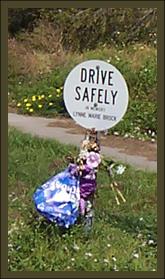 Approximate annual fatality and injury totals are as follows:
Approximate annual fatality and injury totals are as follows:
- About 40,000 people are killed each year in our nation in vehicle crashes.
- About 3,500 of these fatalities occur in the state of Florida.2
- Across our country, over 2 million people are injured each year in police-reported crashes.
- About 100 people die every day in our country in vehicle crashes.1
 Comparing our vehicle fatalities to wartime losses might help place the significance of these deaths in perspective. On September 11, 2001, our nation lost approximately 3,000 people in the terrorist attacks on our country, and every year in the state of Florida, we lose almost that number on our highways. Each year our nation commemorates those lost on 9/11, but we seldom think about those lost in traffic crashes. While the causes of these deaths are drastically different, terrorists on the one hand and mistakes, bad driving practices, and law violations on the other, the results are exactly the same for the family members left behind. In both cases, the families of those lost expected to see their loved ones again; they expected that they would be coming home on the day they died. When talking about the deaths of their loved ones in traffic crashes, students who have attended our driver improvement course often use the word “shocking” to describe their loss. Traffic fatalities shock families because these events are so unexpected.
Comparing our vehicle fatalities to wartime losses might help place the significance of these deaths in perspective. On September 11, 2001, our nation lost approximately 3,000 people in the terrorist attacks on our country, and every year in the state of Florida, we lose almost that number on our highways. Each year our nation commemorates those lost on 9/11, but we seldom think about those lost in traffic crashes. While the causes of these deaths are drastically different, terrorists on the one hand and mistakes, bad driving practices, and law violations on the other, the results are exactly the same for the family members left behind. In both cases, the families of those lost expected to see their loved ones again; they expected that they would be coming home on the day they died. When talking about the deaths of their loved ones in traffic crashes, students who have attended our driver improvement course often use the word “shocking” to describe their loss. Traffic fatalities shock families because these events are so unexpected.
 During the 10-plus years of our wars in Afghanistan and Iraq, our country lost approximately 7,000 brave men and women in uniform, about 2 fatalities per day. During that same time period, our country lost about 50-times more people in crashes on our roadways. While many Americans are aware and appropriately concerned about our nation’s wartime losses, most have little awareness and are, therefore, relatively unconcerned about the high number of lives lost in vehicle crashes.3
During the 10-plus years of our wars in Afghanistan and Iraq, our country lost approximately 7,000 brave men and women in uniform, about 2 fatalities per day. During that same time period, our country lost about 50-times more people in crashes on our roadways. While many Americans are aware and appropriately concerned about our nation’s wartime losses, most have little awareness and are, therefore, relatively unconcerned about the high number of lives lost in vehicle crashes.3
In addition to causing high numbers of deaths and injuries, motor vehicle crashes have a tremendous economic impact. The National Highway Traffic Safety Administration (NHTSA) has estimated that the economic impact of motor vehicle crashes is over $340 billion per year, approximately $1,000 for each person living in our country.4
Even if you are not directly involved in a crash, your insurance premiums pay the medical and vehicle repair or replacement costs for those who were involved. Also, traffic crashes result in the expenditure of tax dollars and cause traffic delays. In all, the NHTSA estimates that approximately 75% of crash-related costs are paid by people who were not directly involved in crashes.4
 It goes without saying that none of us want to be killed while driving. What we rarely consider, however, is the potentially worse scenario of being responsible for the death of another person, another driver or a passenger. Far too often, driver impairment leads to the death of others sharing the road with an impaired driver.
It goes without saying that none of us want to be killed while driving. What we rarely consider, however, is the potentially worse scenario of being responsible for the death of another person, another driver or a passenger. Far too often, driver impairment leads to the death of others sharing the road with an impaired driver.
The state of Florida uses the amount of alcohol in a driver’s blood, which is referred to as the Blood Alcohol Level (or BAL), as a measure of his/her level of impairment. BAL is calculated by measuring the weight of alcohol in a volume of blood. In every state, including Florida, a driver is presumed to be impaired (presumptively impaired) at a Blood Alcohol Level of .08. In other words, that driver’s actual level of physical and mental impairment does not need to be proven—it is presumed.
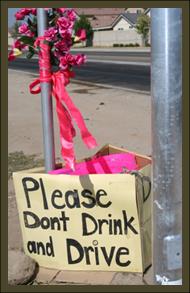 About 30% of the motor vehicle fatalities in our country each year are classified by the National Highway Traffic Safety Administration (NHTSA) as alcohol-impaired-driving fatalities. For a fatality to be classified as an alcohol-impaired-driving fatality, at least one operator of a motor vehicle involved in the fatal crash must have a BAL of .08 or higher. In addition, the NHTSA reports that another 5% of the motor vehicle fatalities in our country involve at least one vehicle operator with alcohol in his/her system but below the .08 BAL level where the operator is considered to be legally impaired. It is important to understand that the first drink starts the impairment process and can lead to a fatal traffic crash and that it is possible to be convicted for driving under the influence even if your BAL is below .08. It is staggering to consider the number of people who die each year as a result of a preventable factor, driving while impaired. In this course, we will consider many causes for fatal motor vehicle crashes, but one preventable factor, drinking, is a leading killer of those lost on our roadways.5,6
About 30% of the motor vehicle fatalities in our country each year are classified by the National Highway Traffic Safety Administration (NHTSA) as alcohol-impaired-driving fatalities. For a fatality to be classified as an alcohol-impaired-driving fatality, at least one operator of a motor vehicle involved in the fatal crash must have a BAL of .08 or higher. In addition, the NHTSA reports that another 5% of the motor vehicle fatalities in our country involve at least one vehicle operator with alcohol in his/her system but below the .08 BAL level where the operator is considered to be legally impaired. It is important to understand that the first drink starts the impairment process and can lead to a fatal traffic crash and that it is possible to be convicted for driving under the influence even if your BAL is below .08. It is staggering to consider the number of people who die each year as a result of a preventable factor, driving while impaired. In this course, we will consider many causes for fatal motor vehicle crashes, but one preventable factor, drinking, is a leading killer of those lost on our roadways.5,6
Alcohol is involved in about 10% of all crashes, from fender benders to fatalities. But alcohol is a factor in about 30% of all fatal crashes. This tells us that alcohol-related crashes tend to be more lethal, as a small percentage of total crashes accounts for almost one-third of all traffic fatalities.7
You should not drive if you have any alcohol in your system—even a small amount. When you consider that the great majority of crashes occur when drivers are completely sober with no impairment of their skills or judgment, we should all be incredibly cautious to avoid any reduction in our capabilities before driving, and that includes consuming even small amounts of alcohol.
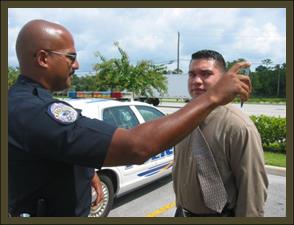 As we mentioned earlier, a BAL of .08 is the "presumptive limit," where a driver is presumed to be impaired. This is the correct terminology. However, you will often hear news reporters and others use the term “legal limit” to describe a BAL of .08. The term “legal limit” is misleading because it implies that it is completely legal to drive with a BAL that is less than .08. It is important to understand that in the state of Florida a driver can be convicted of driving under the influence even if his/her BAL is less than .08 if that driver’s impairment can be proven. This is a more complicated conviction because impairment isn’t presumed, but it can happen.6
As we mentioned earlier, a BAL of .08 is the "presumptive limit," where a driver is presumed to be impaired. This is the correct terminology. However, you will often hear news reporters and others use the term “legal limit” to describe a BAL of .08. The term “legal limit” is misleading because it implies that it is completely legal to drive with a BAL that is less than .08. It is important to understand that in the state of Florida a driver can be convicted of driving under the influence even if his/her BAL is less than .08 if that driver’s impairment can be proven. This is a more complicated conviction because impairment isn’t presumed, but it can happen.6
Just one drink of any type can affect a person’s capabilities, both mental and physical. There is only one way to know that your ability to drive will not be impaired—don’t drink and drive. If you drink and drive, you greatly increase the likelihood that you will be involved in a crash.8,9
The risk to sober drivers from drivers who are on the road and have been drinking.
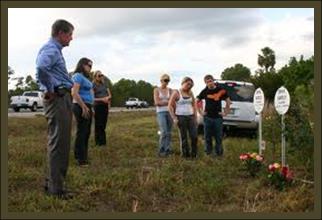 Impaired drivers kill sober drivers sharing the road with them. Several of our students have shares stories about losing their family members in crashes caused by impaired drivers. An impaired driver killed the brother of one of our students when he was driving to work one morning. Another one of our students was injured and his wife was killed when an impaired driver abruptly turned left in front of their motorcycle.
Impaired drivers kill sober drivers sharing the road with them. Several of our students have shares stories about losing their family members in crashes caused by impaired drivers. An impaired driver killed the brother of one of our students when he was driving to work one morning. Another one of our students was injured and his wife was killed when an impaired driver abruptly turned left in front of their motorcycle.
Who do you think is most likely to be involved in a fatal crash—a younger driver or an older driver? Younger drivers are much more likely to be involved in fatal crashes than older drivers, and until you reach your mid-30’s, traffic crashes are the leading cause of death in our country. In the United States, we have about 13 million younger drivers ages 15 to 20 and over 30 million older drivers ages 65 and older. Despite the much greater number of older drivers, both of these groups are involved in about the same number of fatal crashes each year. In other words, a younger driver is about three times more likely to be involved in a fatal crash than an older driver.1,10,11
 We have just seen that younger drivers are more likely to be involved in a fatal vehicle crash than older drivers and that these fatal crashes kill younger drivers, their passengers, and the occupants of vehicles they crash into. Why are younger drivers more likely to be involved in fatal crashes? After all, one might logically expect that the quick reaction times, good vision, physical strength, and agility of younger drivers would make them safer than older drivers. However, older drivers are safer because they have more experience behind the wheel, and most importantly, they use better judgment. Good judgment can compensate for a lack of skill, but skill cannot compensate for a lack of judgment. All drivers need to use good judgment.
We have just seen that younger drivers are more likely to be involved in a fatal vehicle crash than older drivers and that these fatal crashes kill younger drivers, their passengers, and the occupants of vehicles they crash into. Why are younger drivers more likely to be involved in fatal crashes? After all, one might logically expect that the quick reaction times, good vision, physical strength, and agility of younger drivers would make them safer than older drivers. However, older drivers are safer because they have more experience behind the wheel, and most importantly, they use better judgment. Good judgment can compensate for a lack of skill, but skill cannot compensate for a lack of judgment. All drivers need to use good judgment.
 Older drivers and older vehicle occupants reduce risk by using better judgment than younger drivers and younger vehicle occupants. For example, younger drivers who are involved in fatal crashes are much more likely than older drivers to have Blood Alcohol Levels of .08 or higher.1,5
Older drivers and older vehicle occupants reduce risk by using better judgment than younger drivers and younger vehicle occupants. For example, younger drivers who are involved in fatal crashes are much more likely than older drivers to have Blood Alcohol Levels of .08 or higher.1,5
Older drivers also use comparatively better judgment when it comes to speeding. Younger drivers involved in fatal crashes are more likely than older drivers to be speeding. As with alcohol use, the percentage of drivers involved in fatal crashes that were speeding generally declines as drivers get older.1
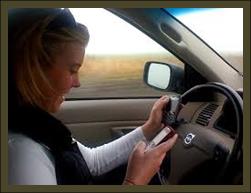 Older drivers also use better judgment when it comes to focusing on driving. Younger drivers are more likely to be distracted by friends and by electronic gadgets like music devices, cell phones, and iPads than older drivers, and this distraction leads to a higher rate of fatal crashes.
Older drivers also use better judgment when it comes to focusing on driving. Younger drivers are more likely to be distracted by friends and by electronic gadgets like music devices, cell phones, and iPads than older drivers, and this distraction leads to a higher rate of fatal crashes.
Finally, older vehicle occupants use comparatively better judgment when it comes to wearing safety belts. Younger drivers are less likely to wear safety belts.12
Alcohol, speed and distraction—these factors come together as a “triple whammy,” resulting in high fatal crash rates for younger drivers. When a crash does occur, the additional factor of not wearing safety belts results in a “quadruple whammy,” increasing fatality and injury rates for younger drivers and their passengers.
How impaired driver’s actions affect other people. Courts, law enforcement, family, friends.
 Killing or injuring another person in a vehicle crash would lead to severe penalties and, more importantly, a lifetime of regret. If you are arrested for DUI, even if someone is not killed or injured, you will be taken to jail. Imagine the embarrassment you would feel when your family comes to the jail and sees you in your inmate clothing. Think about the burden that you would be placing upon your family to find a bail bond company and to pay the necessary fees to bail you out of jail. Consider the stress involved in selecting the right attorney to represent you and with paying the significant fees for legal representation. Most younger drivers are not in a position to pay these attorney’s fees themselves and would turn to their parents for assistance. Imagine how guilty you would feel knowing how hard your parents work for their paychecks and thinking about all of the other things that they could have spent their hard-earned money on.
Killing or injuring another person in a vehicle crash would lead to severe penalties and, more importantly, a lifetime of regret. If you are arrested for DUI, even if someone is not killed or injured, you will be taken to jail. Imagine the embarrassment you would feel when your family comes to the jail and sees you in your inmate clothing. Think about the burden that you would be placing upon your family to find a bail bond company and to pay the necessary fees to bail you out of jail. Consider the stress involved in selecting the right attorney to represent you and with paying the significant fees for legal representation. Most younger drivers are not in a position to pay these attorney’s fees themselves and would turn to their parents for assistance. Imagine how guilty you would feel knowing how hard your parents work for their paychecks and thinking about all of the other things that they could have spent their hard-earned money on.
 Going through the legal process would require multiple meetings with your attorney and several court appearances. If you were convicted of DUI, you would have a criminal record, just like the criminal record of a shoplifter or thief. A DUI conviction would have a long-term impact on your life, greatly complicating or limiting future employment options as many employers refuse to hire people with criminal records.
Going through the legal process would require multiple meetings with your attorney and several court appearances. If you were convicted of DUI, you would have a criminal record, just like the criminal record of a shoplifter or thief. A DUI conviction would have a long-term impact on your life, greatly complicating or limiting future employment options as many employers refuse to hire people with criminal records.
 A DUI conviction would involve jail or probation time, and any violation of your probation, to include not completing required classes or being late for court appointments or meetings with your probation officer, could result in additional court appearances and possible jail time. You would also have your driver’s license revoked. If you are convicted of DUI, you can expect to be involved in the legal system for over a year, a big chunk of time to spend as a teenager. A DUI conviction would create a great burden on your family. You would need transportation to court hearings, meetings with your probation officer, community service appointments, and required classes and counseling. Also, you would need transportation to school, to work, and to other activities that you might enjoy. Your independence as a teenage person would take a gigantic step backward.6
A DUI conviction would involve jail or probation time, and any violation of your probation, to include not completing required classes or being late for court appointments or meetings with your probation officer, could result in additional court appearances and possible jail time. You would also have your driver’s license revoked. If you are convicted of DUI, you can expect to be involved in the legal system for over a year, a big chunk of time to spend as a teenager. A DUI conviction would create a great burden on your family. You would need transportation to court hearings, meetings with your probation officer, community service appointments, and required classes and counseling. Also, you would need transportation to school, to work, and to other activities that you might enjoy. Your independence as a teenage person would take a gigantic step backward.6
Also, your family might be required to assist you in meeting the many financial requirements associated with a DUI conviction. Fines must be paid. License reinstatement fees are an additional expense. Also, your auto insurance company might cancel your policy or the policy your parents have for your family. If not cancelled, you can expect your insurance premium to increase substantially. As already addressed, if you decide to hire an attorney, fees for legal representation would also be significant.6,13
 These factors generate tremendous stress for the driver and his/her family. The criminal justice system is designed to deal with criminals, and most people who have been convicted of DUI find that being treated like a criminal is not a pleasant experience. For example, when your attendance is required in court, you will be ordered to appear in front of the judge at a specific date and time. When you get to court you will usually find that many others charged with criminal offenses are scheduled for the same court time that was assigned to you. Because of the large number of cases, the judge may not be able to get to your case during the scheduled time period. If this happens, you will be expected to return to court on another date, and if the later court date causes you an inconvenience or to miss additional work, don’t expect the judge to apologize. If, on the other hand, you miss a required court appearance or miss a meeting with your probation officer, a warrant can be issued for your arrest. The criminal justice system generates much stress for criminals, including those convicted of DUI.
These factors generate tremendous stress for the driver and his/her family. The criminal justice system is designed to deal with criminals, and most people who have been convicted of DUI find that being treated like a criminal is not a pleasant experience. For example, when your attendance is required in court, you will be ordered to appear in front of the judge at a specific date and time. When you get to court you will usually find that many others charged with criminal offenses are scheduled for the same court time that was assigned to you. Because of the large number of cases, the judge may not be able to get to your case during the scheduled time period. If this happens, you will be expected to return to court on another date, and if the later court date causes you an inconvenience or to miss additional work, don’t expect the judge to apologize. If, on the other hand, you miss a required court appearance or miss a meeting with your probation officer, a warrant can be issued for your arrest. The criminal justice system generates much stress for criminals, including those convicted of DUI.
The societal consequences of DUI are also very significant. Those responsible members of society who do not drink or who refuse to drive after drinking end up shouldering much of the financial burden for those who are not responsible and chose to drive while impaired. Each year our nation experiences about $50 billion in economic costs due to alcohol-related crashes. The National Highway Traffic Safety Administration estimates that approximately 75% of crash-related costs are paid by people who were not involved in crashes during any year. The majority of these costs are paid by insurance companies who collect insurance premiums from both responsible and irresponsible drivers. Also charitable contributions, taxes, and crash-related traffic delays exact a toll from responsible, unimpaired drivers.14
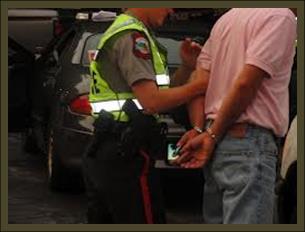 Driving while impaired is a very irresponsible and selfish act. Impaired drivers kill people who are forever lost to their families, and this causes loss of income and productivity in the home. Impaired drivers cause crashes that injure other people, and this results in loss of income and productivity, as well as significant medical costs. For those who are disabled, society steps in to provide some financial support. Also, damaged property must be repaired or replaced. In addition, DUI-related costs include tax payer expenses to provide courts, law enforcement and crash response agencies, and jails and prisons.
Driving while impaired is a very irresponsible and selfish act. Impaired drivers kill people who are forever lost to their families, and this causes loss of income and productivity in the home. Impaired drivers cause crashes that injure other people, and this results in loss of income and productivity, as well as significant medical costs. For those who are disabled, society steps in to provide some financial support. Also, damaged property must be repaired or replaced. In addition, DUI-related costs include tax payer expenses to provide courts, law enforcement and crash response agencies, and jails and prisons.
Persuasive method to prevent drinking and driving.
 If someone were to develop a fail-proof system to insure that drivers would never mix drinking and driving, that person would become very wealthy because government officials, community leaders, and citizens would demand implementation of that system. Maybe someday all vehicles will be equipped with breath analysis systems that will prevent the vehicle from starting if alcohol is on the driver’s breath. Or maybe someday your vehicle won’t start if the steering wheel senses alcohol in your body when your hands touch the wheel. Or maybe sensors will be developed that will prevent your vehicle from starting if certain alcohol-related speech patterns or eye movements are detected.
If someone were to develop a fail-proof system to insure that drivers would never mix drinking and driving, that person would become very wealthy because government officials, community leaders, and citizens would demand implementation of that system. Maybe someday all vehicles will be equipped with breath analysis systems that will prevent the vehicle from starting if alcohol is on the driver’s breath. Or maybe someday your vehicle won’t start if the steering wheel senses alcohol in your body when your hands touch the wheel. Or maybe sensors will be developed that will prevent your vehicle from starting if certain alcohol-related speech patterns or eye movements are detected.
Unfortunately, no matter what systems or law enforcement programs are developed to keep those who are impaired from driving, there will be some who will seek techniques and technologies to counter those systems. For example, police departments use radar to identify speeders, and some speeders use radar detectors to counter those radar systems. Other drivers abide by speed limits when they see law enforcement vehicles in their vicinity but drive over the speed limit when law enforcement is not visible. The only way to truly prevent drinking and driving is to persuade every driver that it is a bad idea.
This course provides information about the dangers and legal consequences of driving while impaired. The Florida Department of Highway Safety and Motor Vehicles believes that driver education reduces impaired driving by persuading our citizens that the dangers and legal consequences are not worth the risk. Alcohol and drugs clearly impair a person’s ability to drive safely. Also, there are significant legal consequences associated with impaired driving. We sincerely hope that you are being persuaded that you should not drive after drinking or using drugs.
REVIEW QUESTIONS FOR SECTION 6
The Section Review Questions will help to prepare you for the Final Exam; incorrect answers will not count against you. You must complete the Section Review Questions before moving on to the next section of the course.
0
1. U.S. Department of Transportation, National Highway Traffic Safety Administration’s National Center for Statistics and Analysis. Traffic Safety Facts, 2021 Data: Summary of Motor Vehicle Traffic Crashes. DOT HS 813 515. Available at: http://www-nrd.nhtsa.dot.gov/Pubs/813515.pdf. Retrieved July 21, 2024.
2. U.S. Department of Transportation, National Highway Traffic Safety Administration’s National Center for Statistics and Analysis. Traffic Safety Facts, 2021 Data: State Traffic Data. DOT HS 813 509. Available at: http://www-nrd.nhtsa.dot.gov/Pubs/813509.pdf. Retrieved July 21, 2024.
3. Quinn P. “US military deaths in Afghanistan hit 2,000.” The Associated Press, Sep 30, 2012. Available at: http://bigstory.ap.org/article/us-military-deaths-afghanistan-hit-2000. Retrieved June 28, 2013.
4. U.S. Department of Transportation, Office of Public Affairs. The Economic and Societal Impact of Motor Vehicle Crashes, 2019 (Revised). DOT HS 813 403. Available at: http://www-nrd.nhtsa.dot.gov/Pubs/813403.pdf. Retrieved July 21, 2024.
5. U.S. Department of Transportation, National Highway Traffic Safety Administration’s National Center for Statistics and Analysis. Traffic Safety Facts, 2022 Data: Alcohol-Impaired Driving. DOT HS 813 578. Available at: http://www-nrd.nhtsa.dot.gov/Pubs/813578.pdf. Retrieved July 21, 2024.
6. Florida Statutes, s. 316.193.
7. U.S. Department of Transportation, National Highway Traffic Safety Administration’s National Center for Statistics and Analysis. Traffic Safety Facts, 2006 Data: Overview. DOT HS 810 809. Available at: http://www-nrd.nhtsa.dot.gov/Pubs/810809.pdf. Retrieved June 28, 2013.
8. Johnson M, Mottola F. Drive Right. Prentice-Hall, 2002, pp 314-315.
9. American Automobile Association (AAA). Responsible Driving. McGraw-Hill Education, Mar 7, 2005, pp 58-59.
10. U.S. Department of Transportation, National Highway Traffic Safety Administration’s National Center for Statistics and Analysis. Traffic Safety Facts, 2022 Data: Older Population. DOT HS 813 616. Available at: http://www-nrd.nhtsa.dot.gov/Pubs/813616.pdf. Retrieved July 21, 2024.
11. U.S. Department of Transportation, National Highway Traffic Safety Administration’s National Center for Statistics and Analysis. Traffic Safety Facts, 2022 Data: Young Drivers. DOT HS 813 601. Available at: http://www-nrd.nhtsa.dot.gov/Pubs/813601.pdf. Retrieved July 21, 2024.
12. U.S. Department of Transportation, National Highway Traffic Safety Administration’s National Center for Statistics and Analysis. Traffic Safety Facts, 2022 Data: Occupant Protection in Passenger Vehicles. DOT HS 813 573. Available at: http://www-nrd.nhtsa.dot.gov/Pubs/813573.pdf. Retrieved July 21, 2024.
13. DWI Resource Center. Drinking and Driving: An Expensive Risk to Take. Available at: http://www.dwiresourcecenter.org/downloads/pdf/workplace/insert10.pdf. Retrieved June 28, 2013.
14. U.S. Department of Transportation, National Highway Traffic Safety Administration. The Economic Impact of Motor Vehicle Crashes 2000. DOT HS 809 446. Available at: http://www-nrd.nhtsa.dot.gov/Pubs/809446.pdf. Retrieved June 28, 2013.
